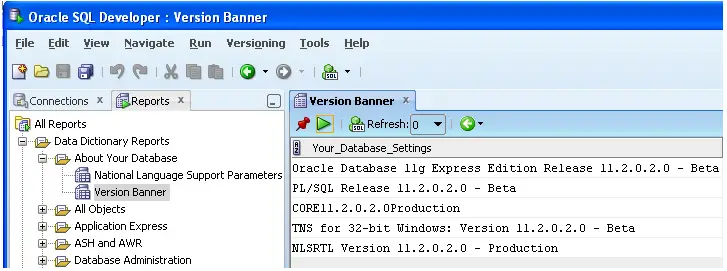

You can also use VirtualBox and Hyper-V virtual machines. If you use a VMware VM, don’t forget to install VMware Tools. If you have never installed Oracle on Linux before, you should learn how to install Oracle on Ubuntu on a virtual machine before installing Oracle on a physical computer or a server. The operating system was installed on the VMware VM without enabling the “ Download updates while installing Ubuntu” option and without using the “ Install third-party software” option during OS deployment. In this tutorial, a freshly installed Ubuntu 16.04.6 is used. Download the full featured free trial and try out the product in your environment today. NAKIVO Backup & Replication can boast of a variety of backup, replication, and recovery options. In this tutorial, we will install Oracle database Enterprise Edition (EE) 11g R2 on Ubuntu. Ubuntu is a popular Linux distribution that is widely used in the world and today’s blog post provides step-by-step instructions of how to install Oracle on Ubuntu.

However, you can install Oracle on Ubuntu Linux and Open SUSE Linux as well. As for Linux distributions, Oracle recommends to install Oracle database on Red-Hat, Oracle Linux, and SUSE Linux Enterprise Server. Installation on Windows is the easiest option while installing Oracle on Solaris and Linux needs manual pre-installation configuration. Oracle Database (will be referred to as Oracle in this blog post) can be installed on Solaris, Windows and Linux. It offers a set of advantages, which include high performance, wide functionality, clusters support, PL/SQL support etc.

Oracle Database is a reliable multiplatform database management software developed by Oracle Corporation. S.By Michael Bose How to Install Oracle 11g on Ubuntu Linux: Complete Guide Please note that this query may list the version which is used by SQL Developer only. You can use the query below in SQL Developer to list the versions of the client libraries used. In the command, only C: and D: drives are searched.

Make sure to add (or remove) hard disk drives if your system has more or less than 2 drives (C: and D:). powershell "gci C:\,D:\ -recurse -filter 'oraclient*.dll' -ErrorAction Silentl圜ontinue | % | ft -Property FileVersion, FileName -AutoSize" List of Oracle Client versions Once the query is executed, a nicely formatted table will be displayed with the versions and their paths. It will call PowerShell first and search for oraclient*.dll files (Asterisk is used to represent the number such as 10, 11 or 12). Simply run the query below in the Command Prompt.


 0 kommentar(er)
0 kommentar(er)
